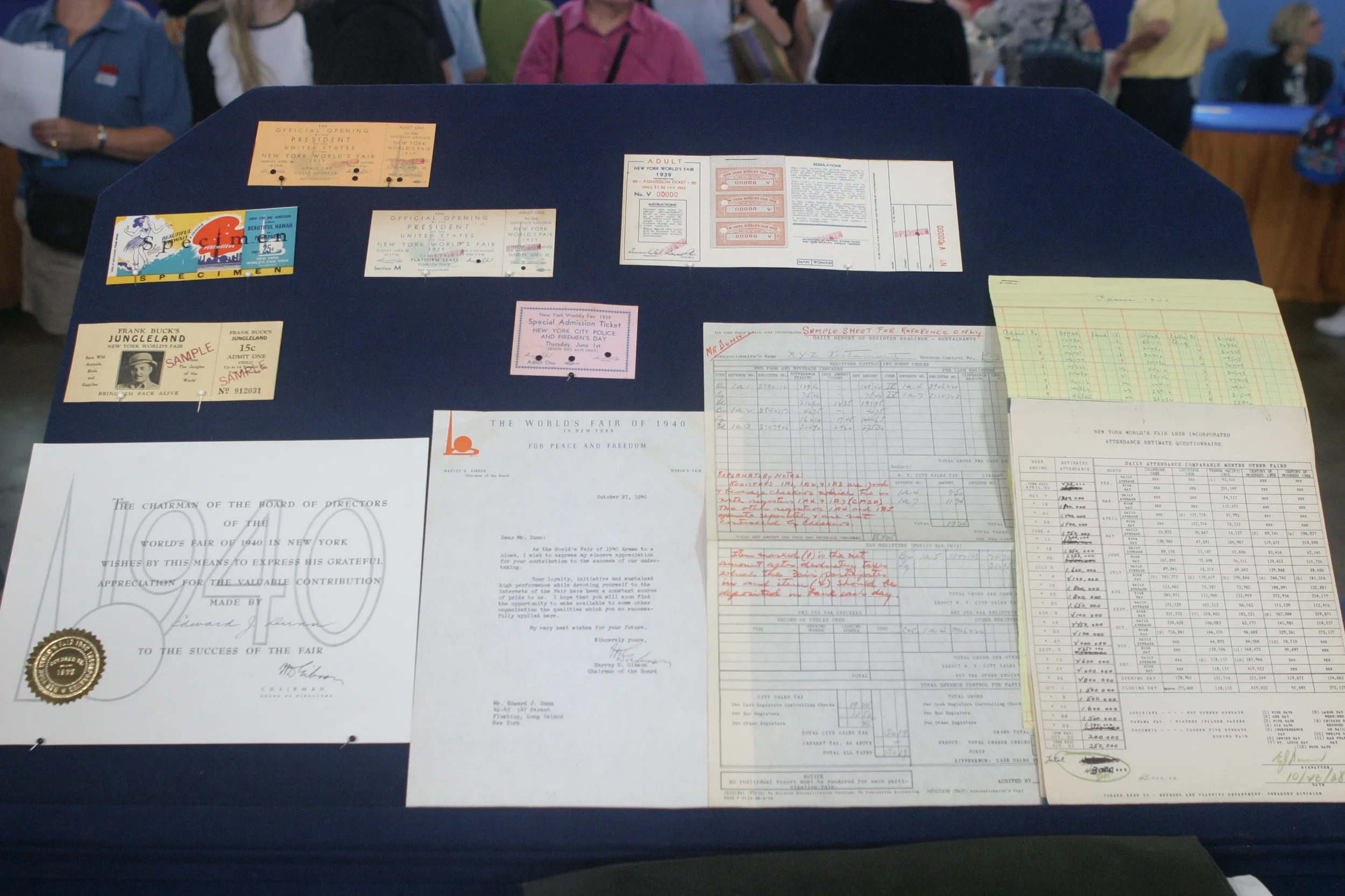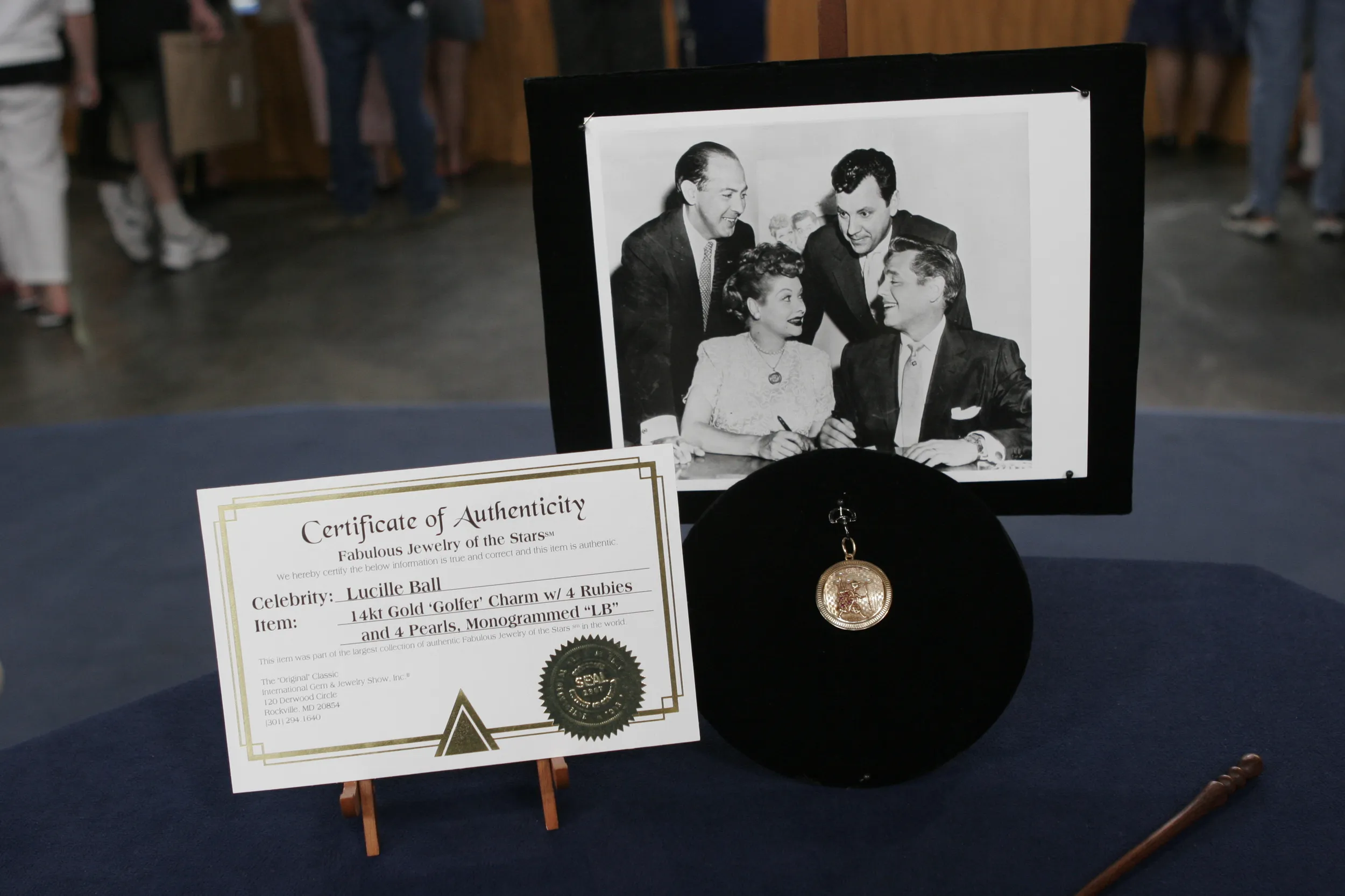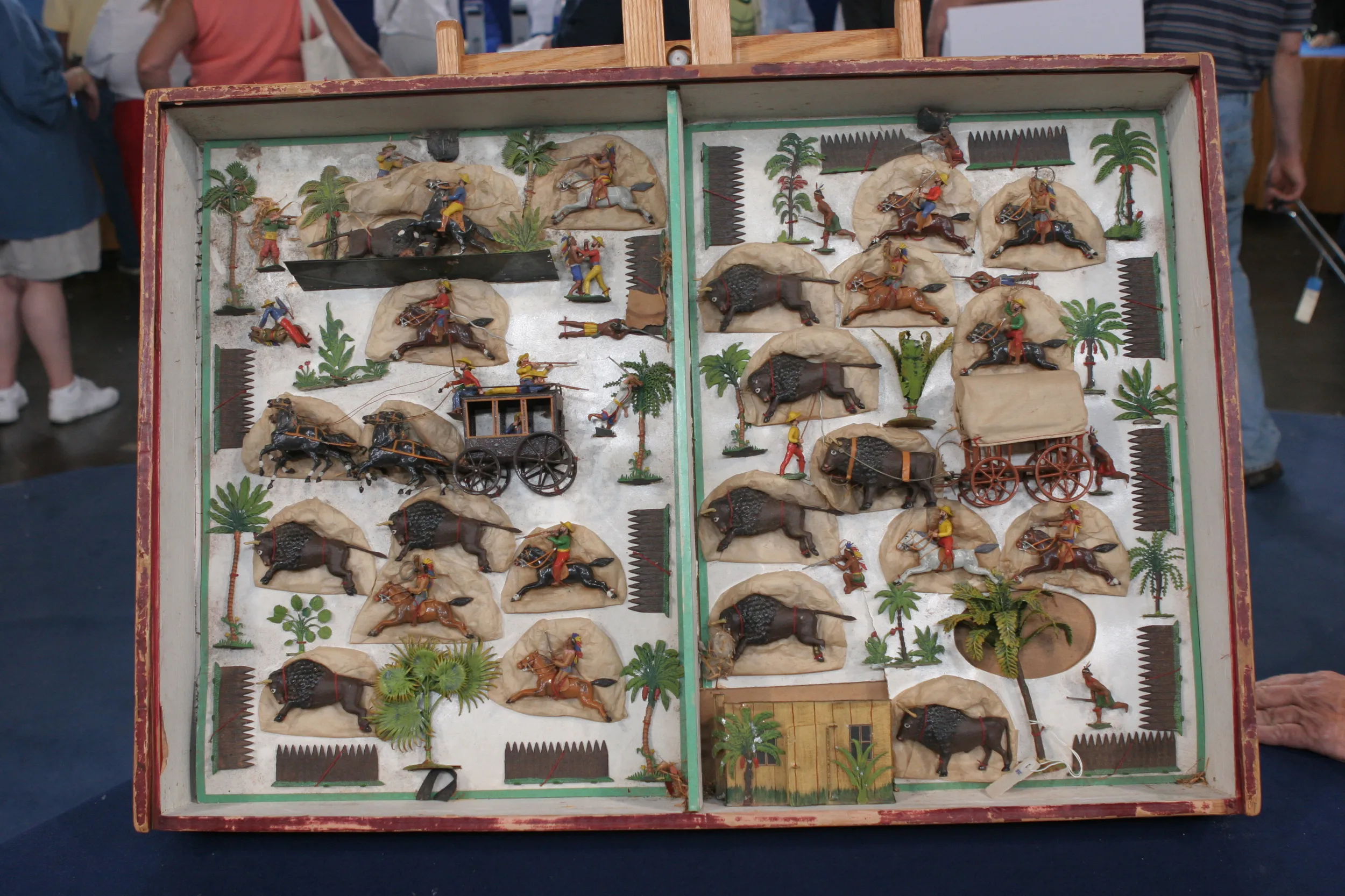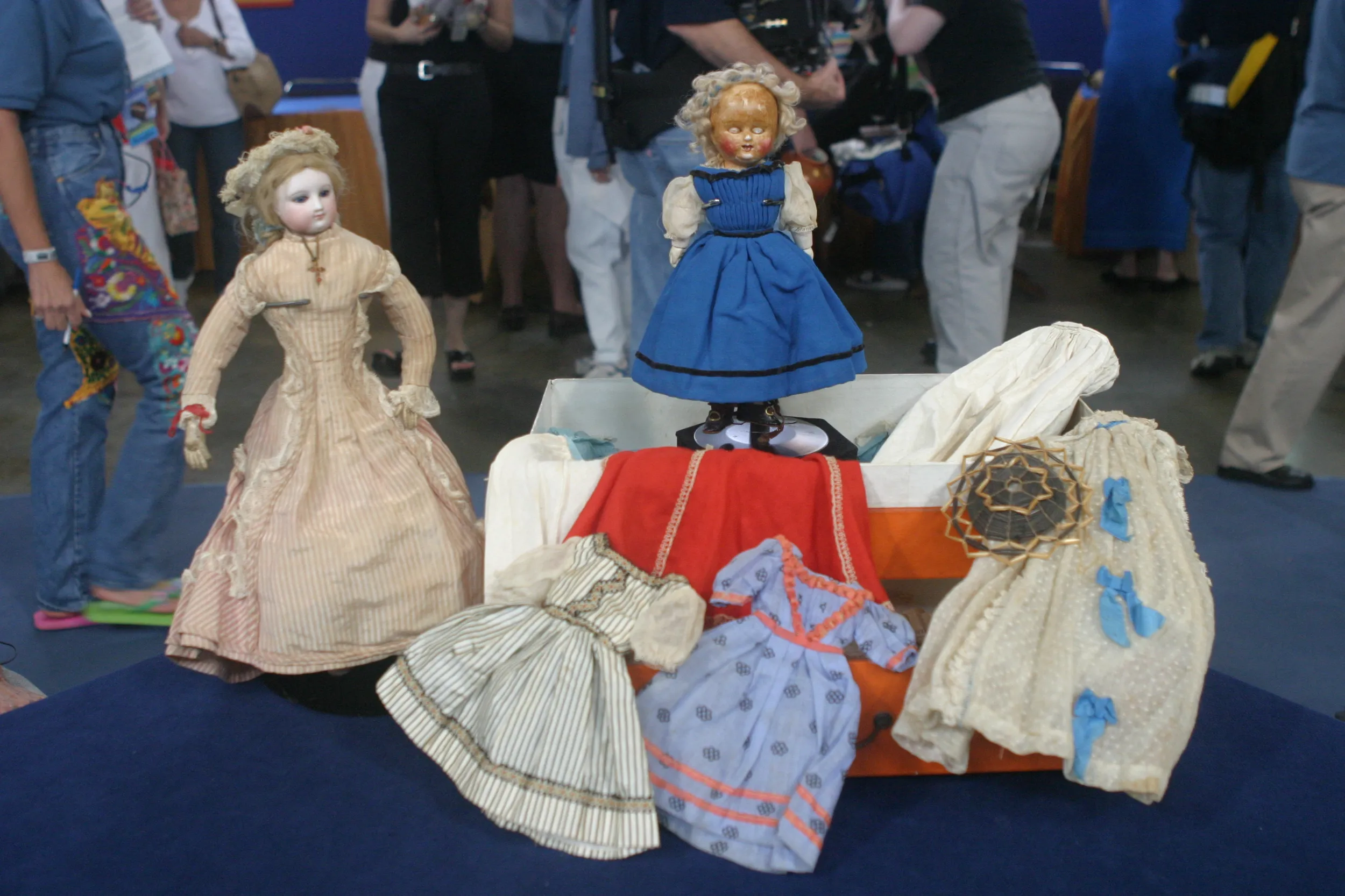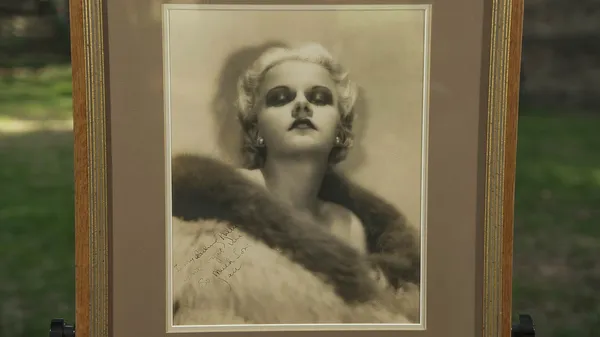GUEST: These items have been in my family for years. My uncle, who was a sailor and stationed at Lakehurst for a bit, gave them to my grandmother. And my grandmother gave them to me, thinking I was the person in the family that was most interested in history. The story I heard was that they were from the Hindenburg. I was quite young when I got them. I didn't think too much about it then, but years later, I was watching an episode of the ANTIQUES ROADSHOW, actually. Someone brought in a fork that had this mark on it, and I thought, "That looks like the mark that's on the things I have." Since then I've been able to do a little research and it appears to be that I think that mark is from the company that owned and operated the Graf Zeppelin and the Hindenburg.
APPRAISER: The Hindenburg was the largest airship every made, largest aircraft of any sort. Over 800 feet long. It crashed on the sixth of May, 1937 in Lakehurst, New Jersey, at Lakehurst Naval Air Station. And everyone has seen the film strip of it crashing and burning. You know, hearing the "Oh, the humanity." And at the time, it was this horribly tragic accident. When the Hindenburg crashed, it caught on fire. And there were over 7 million cubic feet of hydrogen gas that basically burned the ship in 35, 45 seconds. There were 97 passengers and 36 people died. The Hindenburg burned so badly and so hot that almost everything was destroyed. There are a few items that were left and most of those were kind of shoved off to the side, later to be picked up by the German authorities and sent back to Germany.
GUEST: Sure.
APPRAISER: So there were very few items that not only survived the fire and the crash, but survived the recovery. You mentioned it has the mark of the German Zeppelin Transport Company. And it is on both items here. They are both marked with the appropriate hallmarks for the Hindenburg and the Graf Zeppelin. Now, the Graf Zeppelin was assembled in 1940-- it didn't crash. The Hindenburg with its fiery crash is really an icon. It kind of signified the end of airship travel. So what are we looking for? How do we prove that these were on the Hindenburg?
GUEST: Right, nothing says "Hindenburg" on it.
APPRAISER: Right, nothing says directly "Hindenburg." Well, one, Lakehurst, New Jersey. Your uncle was stationed there.
GUEST: Yes.
APPRAISER: This is also made of silver-plated copper and this is a silver-plated base metal. And, see where the silver plating has peeled and bubbled up, especially here?
GUEST: That's what that is, huh?
APPRAISER: And underneath here. You've got to get at some significantly high temperatures you're not going to get from a normal fire in order to generate those kind of marks. You've also got areas here of slight discoloration, slight bubbling and peeling on the platter, too. This great bowl, this great plate from the Hindenburg-- we estimate, at auction, it would sell for about $3,000 to $5,000 a piece.
GUEST: A piece. Wow, that's terrific, to say the least. To say the least.


